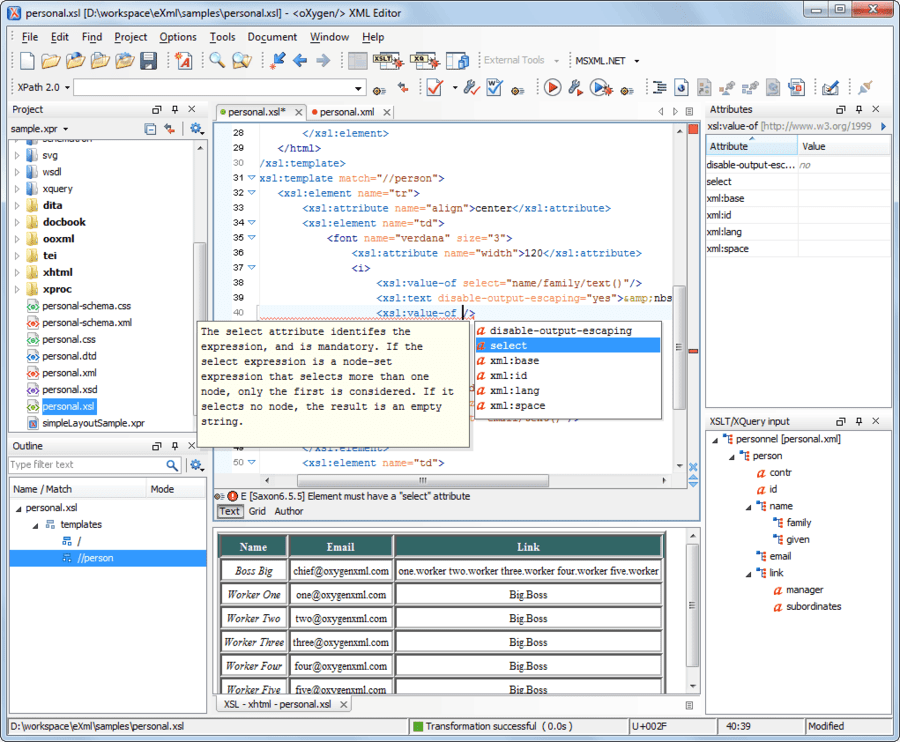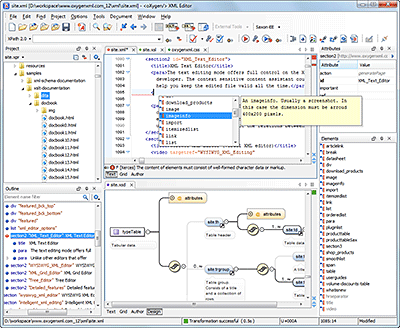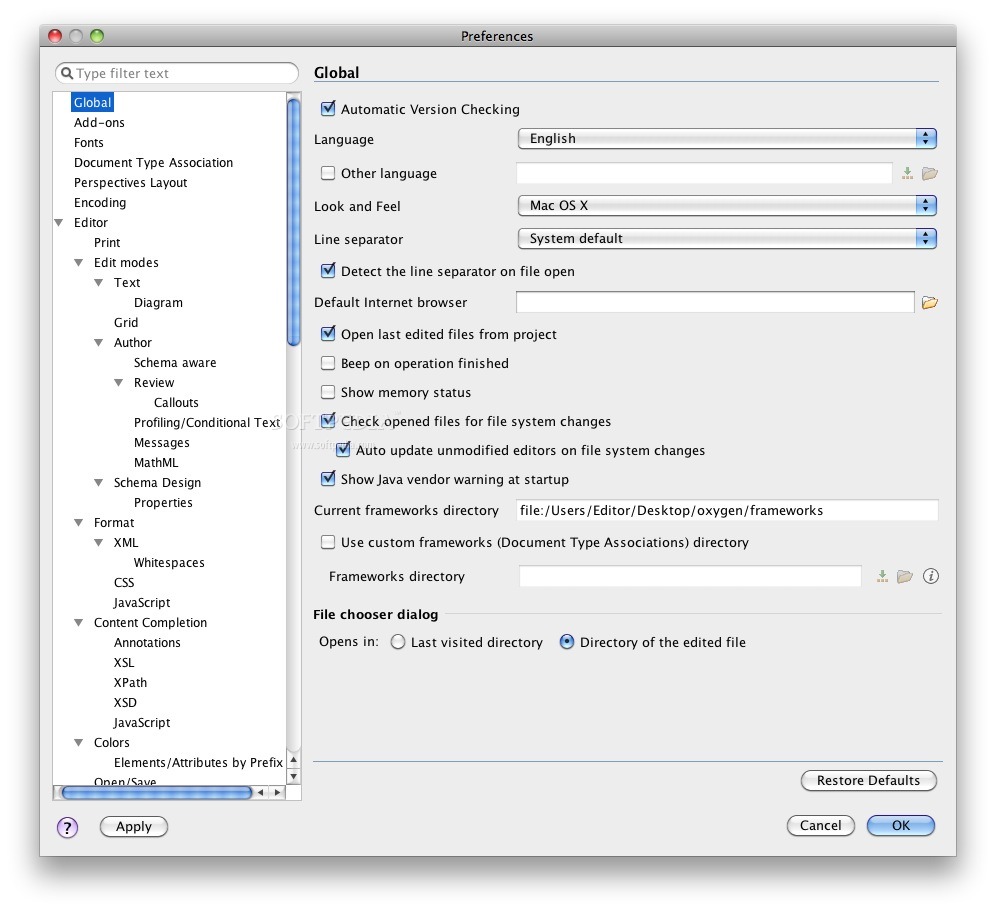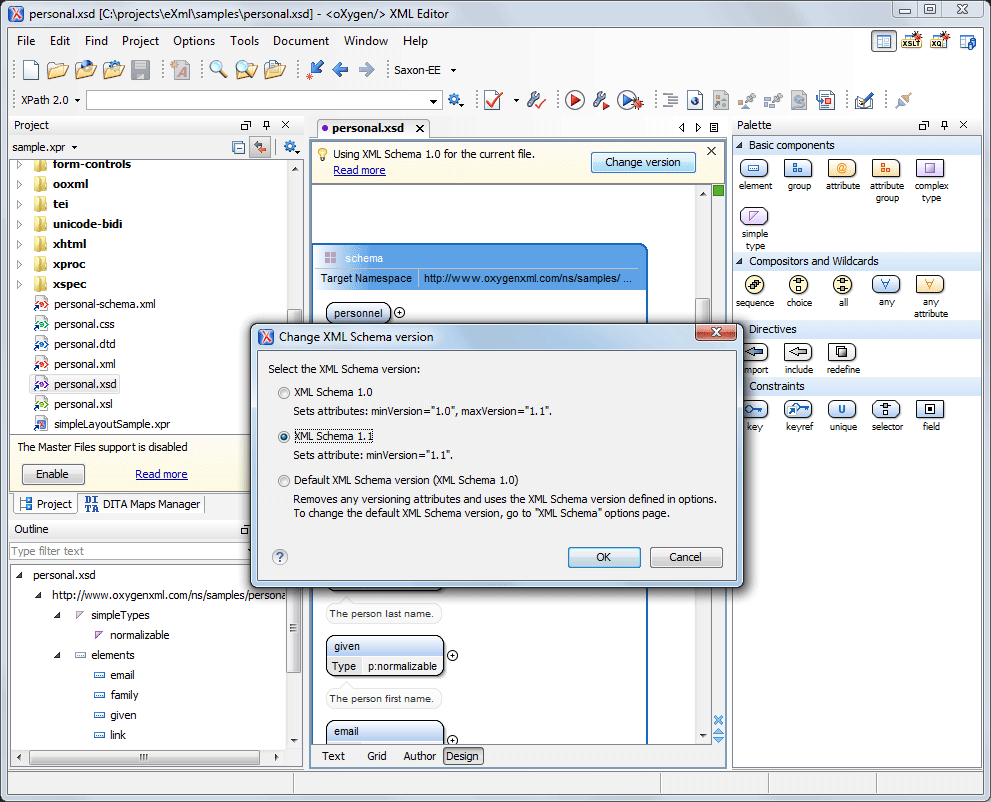


- #Oxygen xml editor args.filter manuals#
- #Oxygen xml editor args.filter manual#
- #Oxygen xml editor args.filter code#
Your DITA map consists of a list of references to topics. When re-using content, there are several techniques to consider: You'll need to make content adjustments for the differing brands and models. There is 70% similarity of content between the six manuals. Both have similar seat stems, but the Trek is fastened via a bolt while the Fisher is fastened with quick release, and so on. Both have the same tires and wheels, but the Fisher has a different spoke size. There are some variations between the topics, sometimes as trivial as simple name changes, other times more substantial, such as entirely different processes.įor example, while the Trek and Fisher bikes both have Shimano brakes and derailleurs, the Fisher bikes have different cranks and pedals than the Trek cranks and pedals. There are approximately 30 sections in your manual, with topics such as maintaining brakes, adjusting handlebars, tightening bottom brackets, greasing chains, adjusting spokes, and so on.
#Oxygen xml editor args.filter manuals#
So in total, you have six manuals to produce from roughly the same content. There are three Gary Fisher bike models: City Slicker 2.0, City Slicker 2.1, and City Slicker 2.2. The parts are mostly the same for the Gary Fisher and Trek bikes, except the parts for the Fisher bikes are rebranded with the Gary Fisher brand. Additionally, the same parts you're documenting are also pushed into another brand: Gary Fisher.
#Oxygen xml editor args.filter manual#
Suppose you're creating an online manual for a Trek 7.1 FX, 7.2 FX, and 7.3 FX model bike. I'll repeat the scenario here because the content re-use strategies I'm using are formulated based on this situation. I described the scenario for content re-use in my previous post. In this post, I explain how to do content re-use with DITA and Oxygen. Content re-use with DITA is much more robust, precise, and just works. XML allows you to re-use content in easier ways. I'm still working on the proof of concept, but it looks promising. If you make the site anonymous and create several sites (one for each product), you can't reuse the same content easily across the different sites.īecause of these issues, I've ditched Confluence and am hoping to officially adopt an XML solution using OxygenXML as the editor. That's a lot of individual user management. If you only want certain groups to see certain content, you have to individually manage their access to those spaces (and each logged-in user counts against your licensing costs). The paradigm is that all content is on one site, grouped into different spaces. The real deal-killer with Confluence is managing access control. While I initially thought Confluence would simplify authoring and allow me to focus more on content, the primitive re-use capabilities actually make help authoring more tedious and time consuming.


1.4 DITA: Limitations with the chunk="to-content" attribute in relationship tables.1.3 DITA hierarchical links, related links, short descriptions, and one-folder organization.
#Oxygen xml editor args.filter code#
1.2 DITA: Why DITA, metadata, working in code and author views, and relationship tables.1.1 DITA: Folder hierarchy, conref, mapref, and more.Academic/Practitioner Conversations Project.Author in DITA and Publish with WordPress.Reflecting seven years later about why we were laid off.A hypothesis about influence on the web and the workplace.


 0 kommentar(er)
0 kommentar(er)
